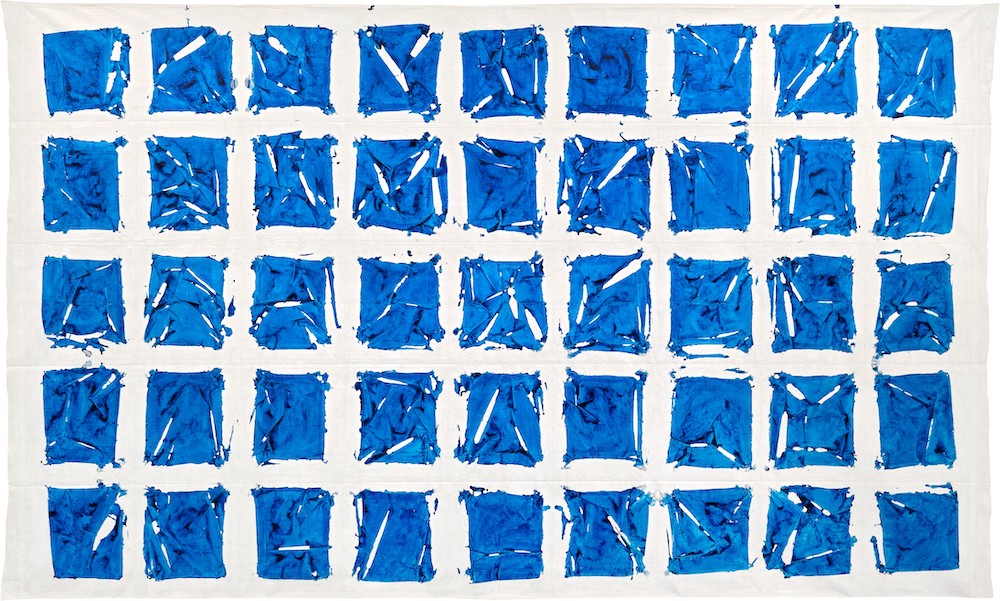Simon Hantaï: Azzurro | Gagosian
In 1948, a then-27-year-old Simon Hantaï walked from Ravenna to Rome. He was a pilgrim from the chillier, greyer north: born in Hungary and later settling in France. And now some of his works, deeply redolent of the warm south, are on show in his original destination city.
We see the blue hues that unite the works on show here - on canvas and on paper, mostly using the folded pliage technique Hantaï’s best known for - in the frescos that decorate Rome’s churches. Warm but alien; precious and expensive. The blue of the Virgin’s robe, and the skies above her.
 Tabula (1980)
Tabula (1980)
“The function of color is essentially linked to light, not to matter,” Hantaï said. But his blue skies aren’t quite clear. There’s a variation in the patterned blue grids of the large Tabula works from the 1970s and early 80s that dominate the main room, here. Sometimes greenish, sometimes almost navy.
Folds run through the surface of these canvases like fissures. That’s due to the pliage technique: the artist folded the canvas over, again and again, painted it, and unfolded. He couldn’t predict how it would look spread out when he applied the paint.
Just as clear skies can shift, suddenly, even in the south. When I arrived in Rome, it was warm and clear; when I left, torrential rain was lashing the runway.
Or when, in 1982, soon after completing his tabulas, Hantaï suffered a mysterious crisis of confidence and stopped exhibiting. He died in 2008. Maybe these grids, superficially enticing as they are, hint, in their troubled surfaces, at the troubles to come.
Simon Hantaï: Azzurro is at Gagosian (Rome). 02 February - 30 March 2024